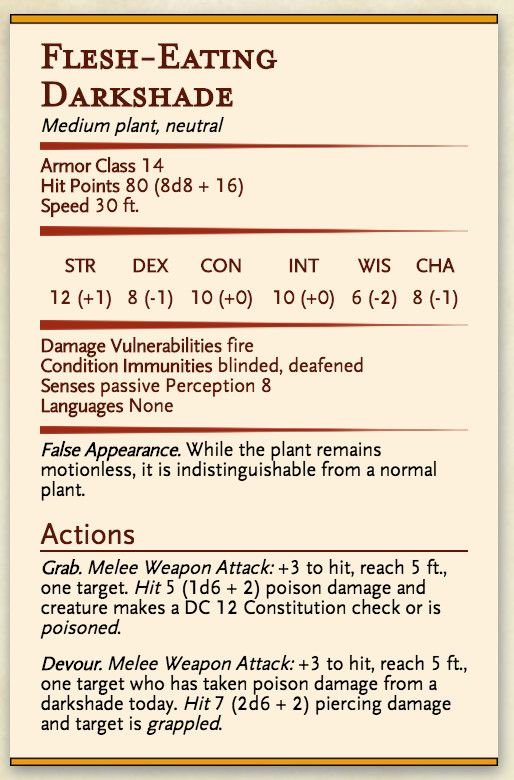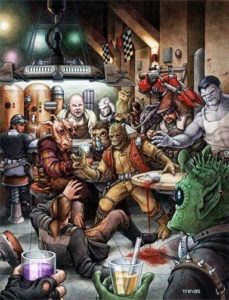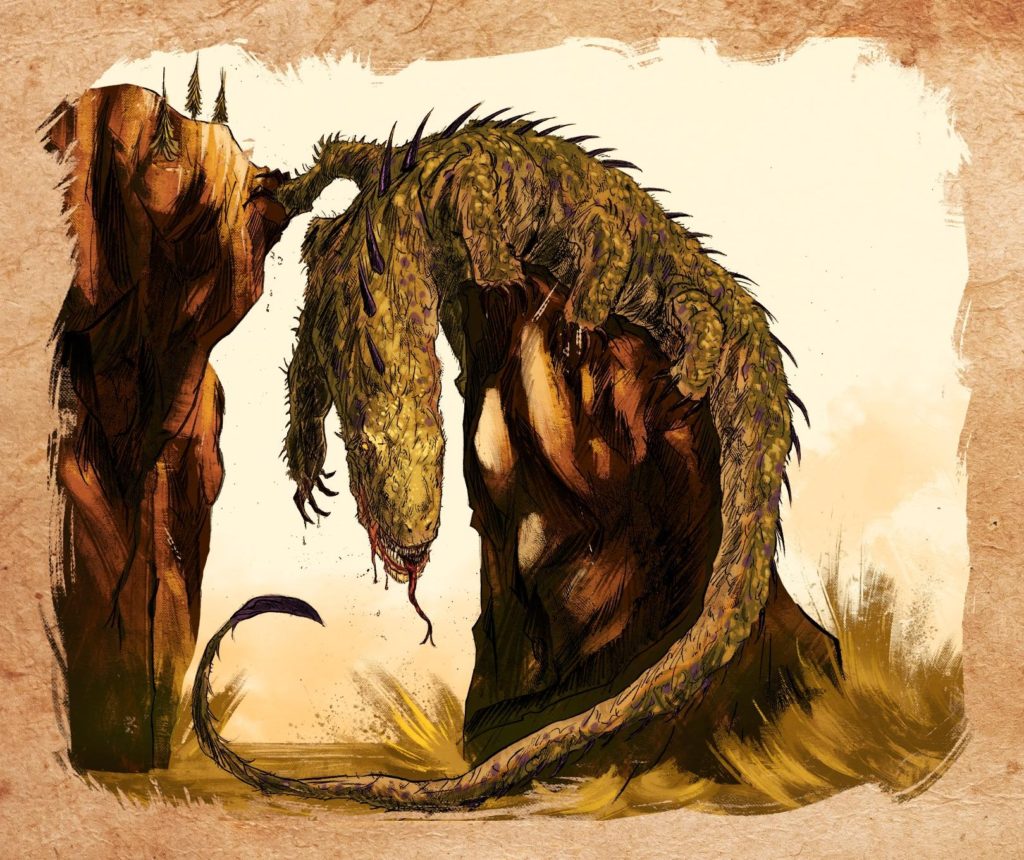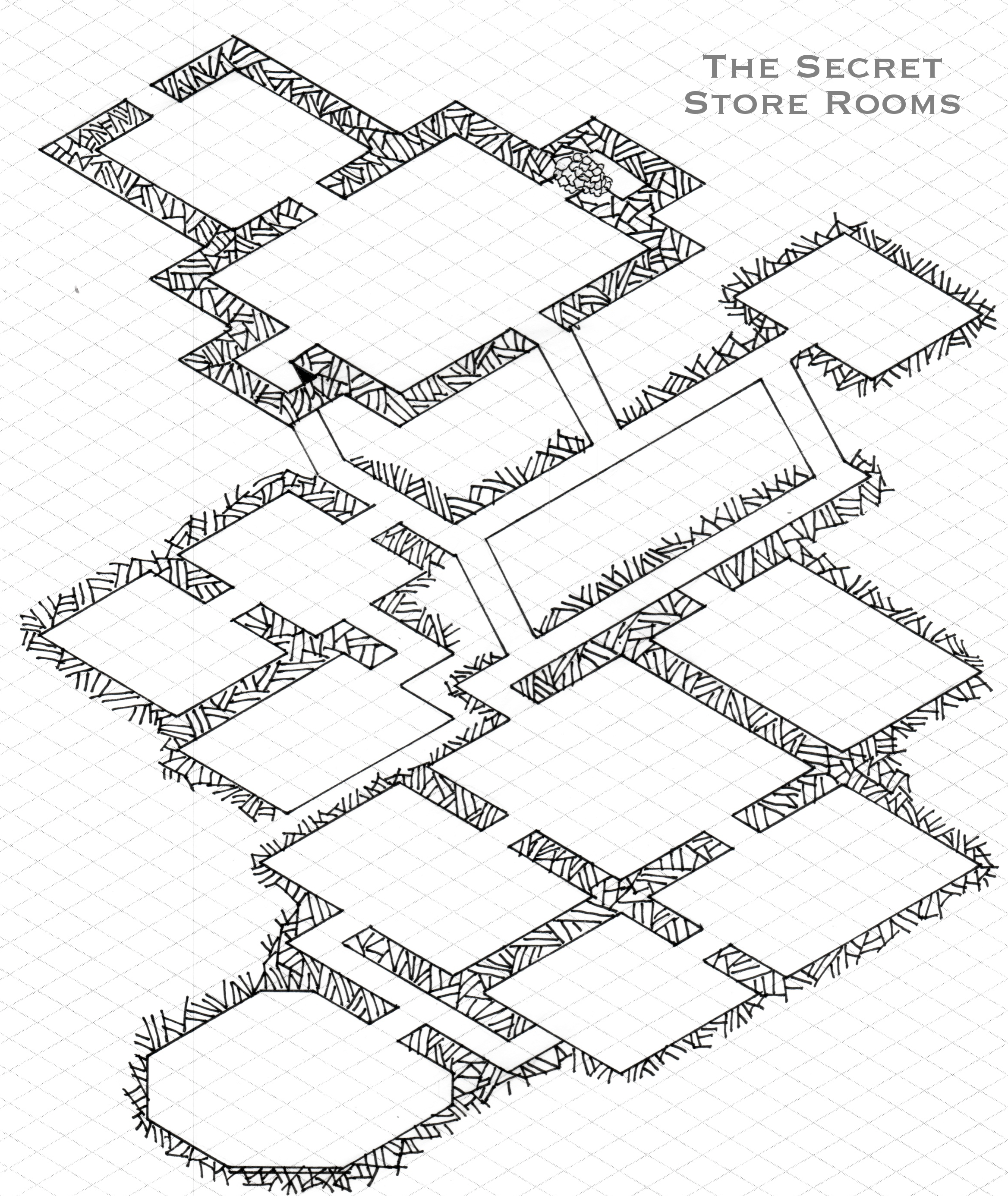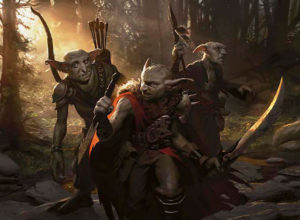
Art from Magic: The Gathering
Some days, you want a complex, multi-faceted faction. Instead, today we have a classic force of what appear to be bad guys, but you can twist into good guys if desired.
Caravans traveling through the region complain of goblins skulking around their camps. They’ve been easy to identify because each goblin wears a black headband. While they haven’t attacked anyone yet, they’re sure to be a problem eventually. Trillian Godshand, an ex-paladin in charge of security for the caravans, tasks the PCs with tracking the goblins down. You can play him as either dismissively casual about wiping about the goblins, or genuinely curious about their behavior and asking the PCs to investigate and resolve rather than destroy with extreme prejudice.
Even cursory investigation will reveal tracks leading to a large stone door sunk into the desert sands/jungle marsh/forest floor, which leads down into the complex below. The goblins live here.
As a friendly faction, the Fleetfoot Tribe was an average band of several dozen goblins until a few weeks ago, when their prior leader got them into a skirmish with a nearby tribe of orcs. The skirmish escalated into a massacre, and only a dozen goblins survived. They escaped, and while running stumbled across this sunken door.
They entered and found themselves in an abandoned shrine and retreat for worshippers of Zattora, a benevolent goddess of wisdom. The goblins found themselves drawn into the inner sanctum (room 1 on the map), where an icon of Zattora shone brightly and a voice called out to them. The surviving goblins, in a moment of awe and humility, threw themselves at the feet of the icon and begged for guidance.
Zattora responded, curious at the openness of these normally evil creatures. Over the past weeks, she has been teaching them methods of hunting and gathering that will not put them at odds with the more civilized races, and their investigation of the caravans were intended to scope out the caravans’ resources and attitude, to see if they might be open to trading with the Fleetfoots once they gather enough tradeable goods.
As such, the goblins will actually offer a peace branch to the PCs, explain the situation, and ask if they would work as emissaries for the Fleetfoots, trading goods with others and driving off more powerful enemies in their area (like that tribe of orcs).
As a foe faction, the Fleetfoot Tribe similarly ran from a massacre by the orcs into this temple, but instead of a temple, this is the map of a large crypt. The goblins found themselves drawn to the inner crypt in room 1, where the spirit of Zattora the Spiteful rose from a sarcophagus, and the door to the room shut. The goblins fell to their knees, and the spirit ordered them to pledge their eternal servitude. They readily agreed.
Zattora was bound here some centuries ago. Most creatures avoid the crypt, so the goblins’ entry was a stroke of luck: they might be able to find enough spell components to free Zattora’s spirit. The ghost has been actively directing and training the goblins into an effective fighting force; they are unusually attentive and relatively bright.
As such, an assault on the crypt will be a much more serious challenge than just clearing out a few goblins. Each goblin will have noticeably higher attack bonuses, and the ghost will be no joke to defeat. Also, several parts of the floors in rooms 2, 3, and 4 have been inscribed with magical runes that grant +2 AC to defenders and -2 AC to attackers.
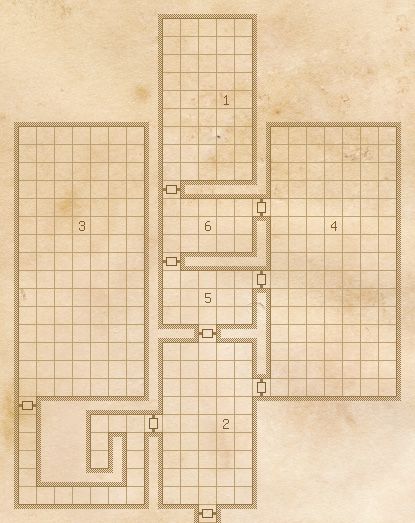
 This carnivorous plant (about 3 meters/yards tall at full height) disguises itself as a normal tuberous plant, typically growing in the wilderness and occasionally in overgrown dungeon environments. When prey nears, it reaches out with its “arms,” which secretes a numbing poison (and can swallow tiny creatures whole). Then its large, serrated mouth lowers onto its prey. With no digestive system, it instead dissolves and digests the creature while it lies semi-conscious in its mouth, usually for several days.
This carnivorous plant (about 3 meters/yards tall at full height) disguises itself as a normal tuberous plant, typically growing in the wilderness and occasionally in overgrown dungeon environments. When prey nears, it reaches out with its “arms,” which secretes a numbing poison (and can swallow tiny creatures whole). Then its large, serrated mouth lowers onto its prey. With no digestive system, it instead dissolves and digests the creature while it lies semi-conscious in its mouth, usually for several days.
